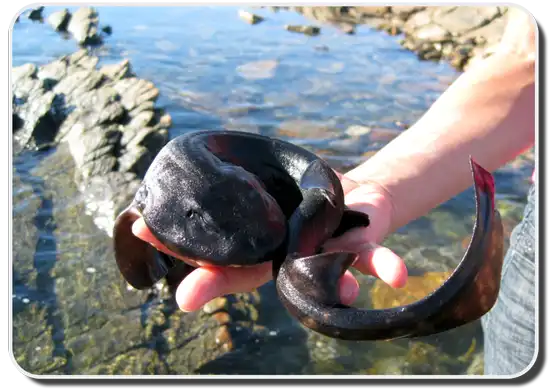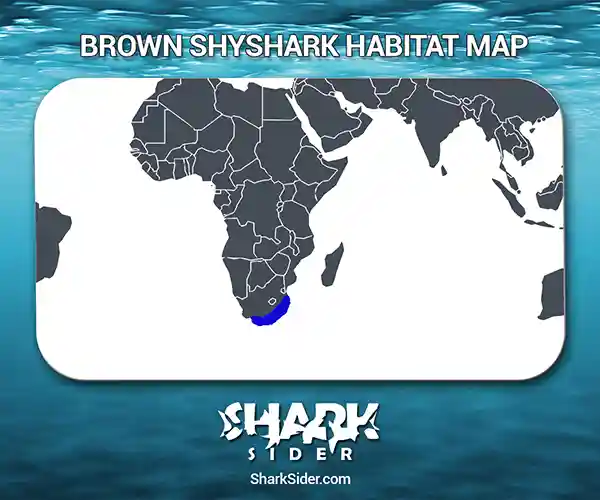Brown catshark, also known as plain happy, is a species of catshark found in the southeast Atlantic Ocean. It is named after its tendency to curl up into a ball with its tail resting over its eyes when threatened. It has many names in different languages, such as bruin skamoog (Afrikaans), roussettebrune (French), braunerkatzenhai (German), and alitánmarrón(Spanish).
South African ichthyologist James Leonard Brierly Smith described this fish in a 1950 article for The Annals and Magazine of Natural History, using a 57 cm (1.8 ft) long adult male caught off the coast of South Africa as a specimen.

Brown Shyshark Scientific Classification |
|
| Kingdom | Animalia |
| Phylum | Chordata |
| Class | Chondrichthyes |
| Order | Carcharhiniformes |
| Family | Scyliorhinidae |
| Genus | Haploblepharus |
| Scientific name | H. fuscus |
Description
The adolescents of this species usually have an average length of 50-54 cm (1.6-1.7 ft.).The adult males measure between 55-69 cm (1.8-2.2 ft), and the adult females are 60-63 cm (1.9-2 ft) long. The largest male measured was 69 cm long, and the maximum length for females was 73 cm.
The brown shyshark has a short, stout body with a flat, broad head and rounded snout, topped by large nostrils and big oval eyes. Five pairs of gill slits lie on the upper side of its body. It is plain brown above and white below. However, darker saddle-like markings or black and white spots could be seen in some individuals.
The pectoral fins are relatively large, and the dorsal, anal and pelvic fins are the same size. The first and second dorsal fins originate behind the pelvic and anal fins. The caudal fin has an indistinct lower lobe and is short and wide. The skin is thick with calcified dermal denticles.
Where do they live
Map Of The Brown Shyshark’s Habitat
Brown shysharks are distributed along the coast of South Africa, ranging from the west of Cape Agulhas and Eastern Cape provincesto KwaZulu-Natal.
They are sedentary, bottom-dwelling animals and prefer sandy flatbeds and rocky reefs. They are found in shallow coastal waters up to 35 m, though they have been sighted as deep as 133 m offshore.
Behavior
Dietary
These sharks feed on marine invertebrates such as lobsters, shrimp, and small bony fishes.
Defensive
They are known to curl up into a ball and cover their eyes with their tail when threatened, aptly giving them their name, shy shark.
Reproductive
Brown shysharks are oviparous, and the females lay two eggs at a time in purse-like cases known as mermaid’s purses. These eggs have long tendrils to attach to a fixed object.
Males reach sexual maturity at lengths of around 65 cm (2.1 ft), and females become sexually mature when they are 60-70 cm (1.9-2.3 ft) long.
Adaptations
Similar to other sharks, they have streamlined bodies for smooth and efficient movement, a sharp sense of sight and smell, and razor-like teeth for tearing into prey.
Human interactions
Brown shysharks are harmless to humans and have little to no commercial value. Hence, they are not commercially fished but sometimes captured as bycatch. They are often caught by recreational anglers and discarded or killed. These sharks can live in captivity and find use in aquariums. However, even though they are in abundant numbers, they are at risk of being negatively affected by heavy fishing activities and climate change.
The IUCN has thus declared the species as “Vulnerable” or “VU.”

